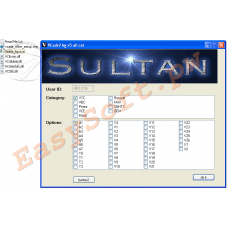Volvo Premium Tech Tool Keygen Generator Ableton
пятница 22 марта admin 40
Provided By: Volvo Construction Equipment Shippensburg, Pa. During most, at the end of each production day or night, someone from the contractor's management team asks how many tons were placed. Often, the real question is how many tons were laid for which full payment and incentive, if available, has been earned. Productivity seems to drive the behavior of most paving contractors. A productive paving project is well choreographed. The four primary elements of plant output, transportation, laydown, and compaction are carefully balanced to achieve best results.
Volvo Premium Tech Tool PTT Crack Keygen 1.12. Zte kis 2 max firmware. Ready to download. Looking for a new or used car? Search millions of listings on OregonLive.com to find the best deals on new, used and certified pre-owned cars for sale in.
When any one of these items is out of balance, productivity drops. Most paving contractors know precisely how many tons of mix the asphalt plant is capable of producing on an hourly basis. The contractors know the storage capacity of the silos. Contractors determine whether the plant will be providing mix for only one project or for multiple projects at the same time.
If the contractor does not own a plant and must purchase mix from another producer, the number of tons of mix to be purchased is usually a contract item and of predictable supply. Contractors also know the size and capacity of the transport trucks used to deliver hot mix asphalt (HMA) to the project.
From experience, contractors estimate the round-trip transportation time from plant to job site and determine how many loads each truck can deliver per unit of time. When it comes to laydown and compaction, predictions on productivity are less certain., the variables of how much HMA is produced and when it is delivered influence the temperature of the asphalt when compacted. Mix temperature is the most critical element in compaction. Keeping compactors in the proper rolling zone to achieve target density requires the right rolling patterns. Best Practices of Compaction There are several procedures that compactor manufacturers teach operators to increase productivity. Since nearly all breakdown rolling today utilizes vibratory double-drum compactors, the following best practices concentrate on operating of this type of compactor.
Make the first pass toward the paver with vibration on. The achieves the most air void reduction because the mix viscosity is low and the ability to rearrange aggregate particles into closer orientation is high. If the edge of the pavement is supported against lateral movement, the operator should slightly overlap the joint between cold and hot panels. The more skilled the operator, the narrower the overlap of the joint needed.
Most operators need only 3 inches to 4 inches of overlap. List prostoya blank. If the edge of the pavement is unsupported, the operator should make this first pass 6 inches to 8 inches away from the edge to reduce lateral shoving of the mat. Stiffer mixes may not require this precaution. Figure 1 shows the proper drum orientation to the pavement on the first pass. Stop forward motion of the compactor, rolling in a slight arc toward the center of the panel, a safe distance behind the paver and crew. The reason for stopping on an angle is to facilitate rolling out drum depressions on the next pass. This helps prevent formation of bumps on the pavement.
Figure 2 shows the technique. The pass on the left side of the panel stops in an arc and the compactor returns on the same path. The next forward pass is on the right side of the panel, passing the previous forward pass, with an arc toward the center of the panel. This technique permits the compactor to achieve more uniform density by staying in the same range of temperature with each side-by-side pass. Roll the end of each subsequent pass beyond the end of the adjacent and previous pass.
